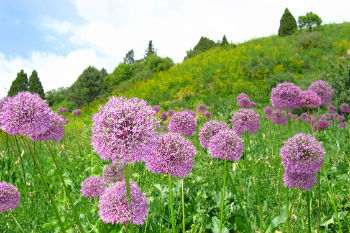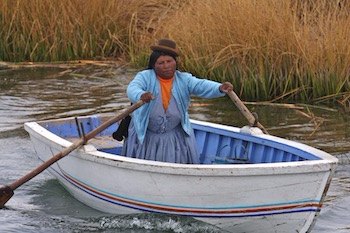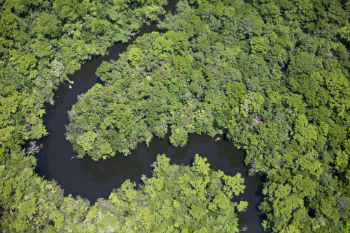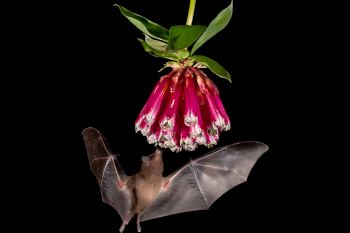Main menu
CEPF is a joint initiative of l’Agence Française de Développement, Conservation International, the European Union, Fondation Hans Wilsdorf, the Global Environment Facility, the Government of Canada, the Government of Japan and the World Bank. A fundamental goal is to ensure civil society is engaged in biodiversity conservation.
Visitez le site français コア情報の日本語翻訳を読むOr use Google Translate to translate the English site to your language:
GTranslate
Forests and Fresh Water: Reviving Rwanda’s Gishwati Forest
Forest of Hope Association has increased Gishwati's forest area from 886 to 1,484 hectares, implemented entrepreneurially-funded fencing to keep out cattle, and overseen reduction in illegal exploitation of forest resources.
21 March 2016
21 March 2016
The world’s forests are an important part of maintaining healthy watersheds, providing everything from erosion prevention to water quality maintenance. The network of roots underneath a forest holds the soil in place. That same root network also aerates the soil, allowing water to be filtered as it drains down into the local supply of groundwater. Even the leaf litter that carpets the forest floor can prevent nitrates from entering the water supply and causing harmful algae blooms.
Considering the prominent role that forests play in water quality, it is no surprise that the deforestation of 98 percent of Rwanda’s Gishwati Forest has had serious effects on local water quality. In 1970, the rain forest was 28,000 hectares that housed a multitude of species, including Endangered eastern chimpanzees (Pan troglodytes schweinfurthii). By 2002, only 600 hectares remained. Much of the forest was clear cut for large-scale cattle ranching, subsistence farming and to relocate displaced refugees of the 1994 Rwandan genocide.
As a result of this extensive deforestation, the area around the forest, which is heavily populated, has experienced flooding, erosion and loss of water quality. The Sebeya River, which flows out of Gishwati, runs brown with excess silt due to the the forest’s greatly diminished ecological services. The Gisenyi Water Treatment Plant must use an expensive process to filter out this silt to make the water suitable for drinking, and the silt frequently builds up and must be cleaned, at further expense to the community.
Working to address these problems is CEPF grantee Forest of Hope Association (FHA).
Formed in 2012 to carry on conservation efforts that were initiated in 2008 by a now-closed organization, FHA members have increased Gishwati’s forest area from 886 hectares to 1,484 hectares, implemented entrepreneurially-funded fencing to keep cattle out of Gishwati and overseen a steep reduction in illegal exploitation of the forest’s resources.
CEPF’s grant allows FHA and local communities to strengthen Gishwati’s protection by establishing Community Forest Protection Committees. These committees monitor Gishwati for illegal activities and educate community members about the tangible benefits of Gishwati’s ecosystem services.
“It has been a model where the community working together can protect the natural resources of forests that they surround,” said Thierry Aimable Inzirayineza, coordinator, Forest of Hope.
In February, the government of Rwanda declared that both Gishwati and Mukura forests will become Rwanda’s fourth and newest national park. With CEPF funds, FHA has produced a three-year interim management plan for the forest, to protect it in the current transition period before it is turned into a national park.
Other results of FHA’s efforts include:
- The entire area of the forest has now been either regenerated from pastures, reforested or is under assisted natural regeneration.
- Local rivers are healthier and floods downstream are decreasing.
- The number of chimpanzees has more than doubled to 30 in the last eight years.
- Alternative livelihoods that do not destroy forest resource, such as beekeeping and tourism, are under development for local residents.
Click here for a video and more on Gishwati Forest and FHA.





